Proudly Second Best!
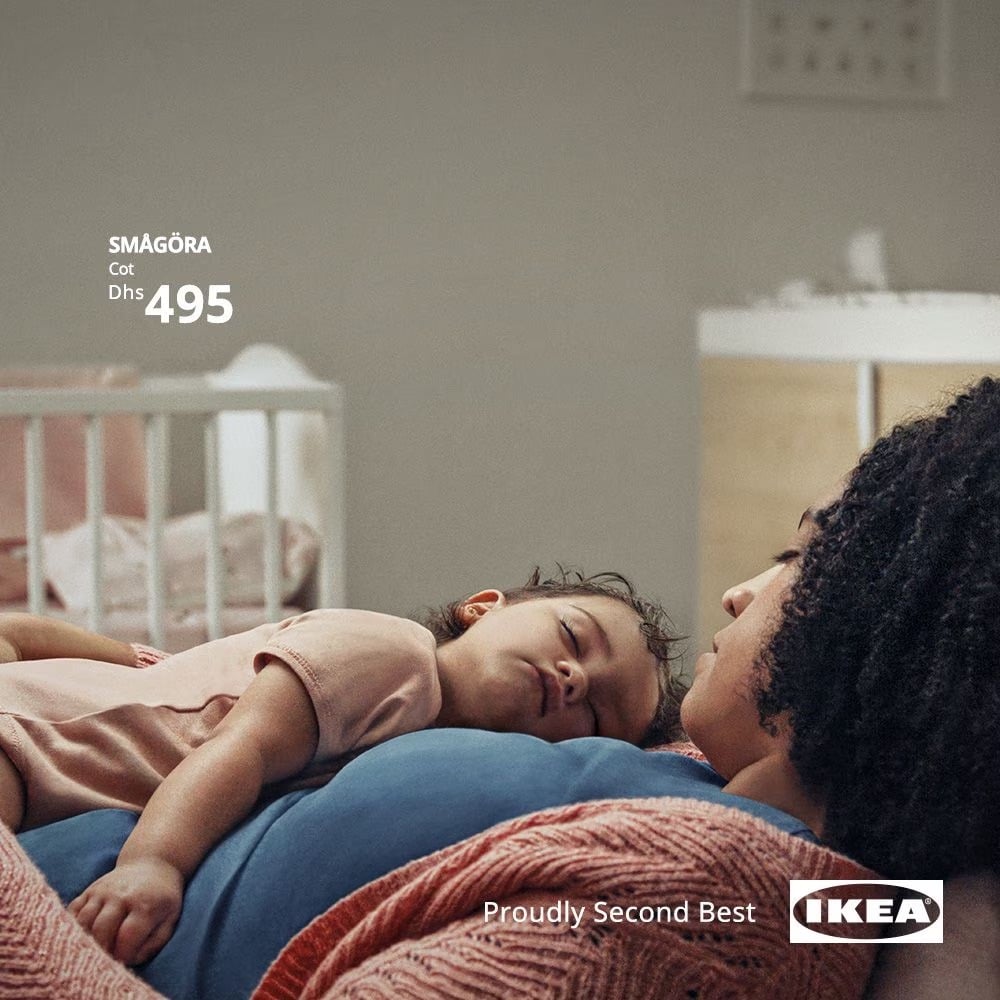
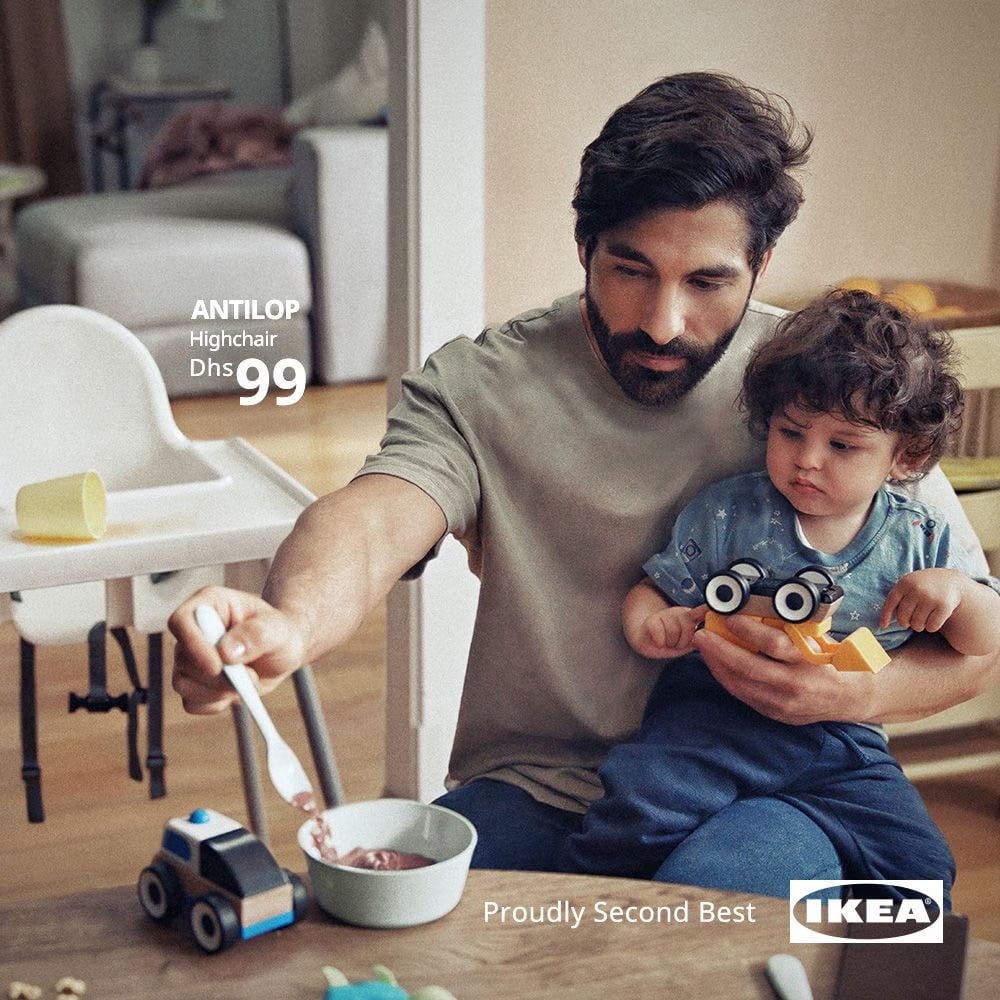
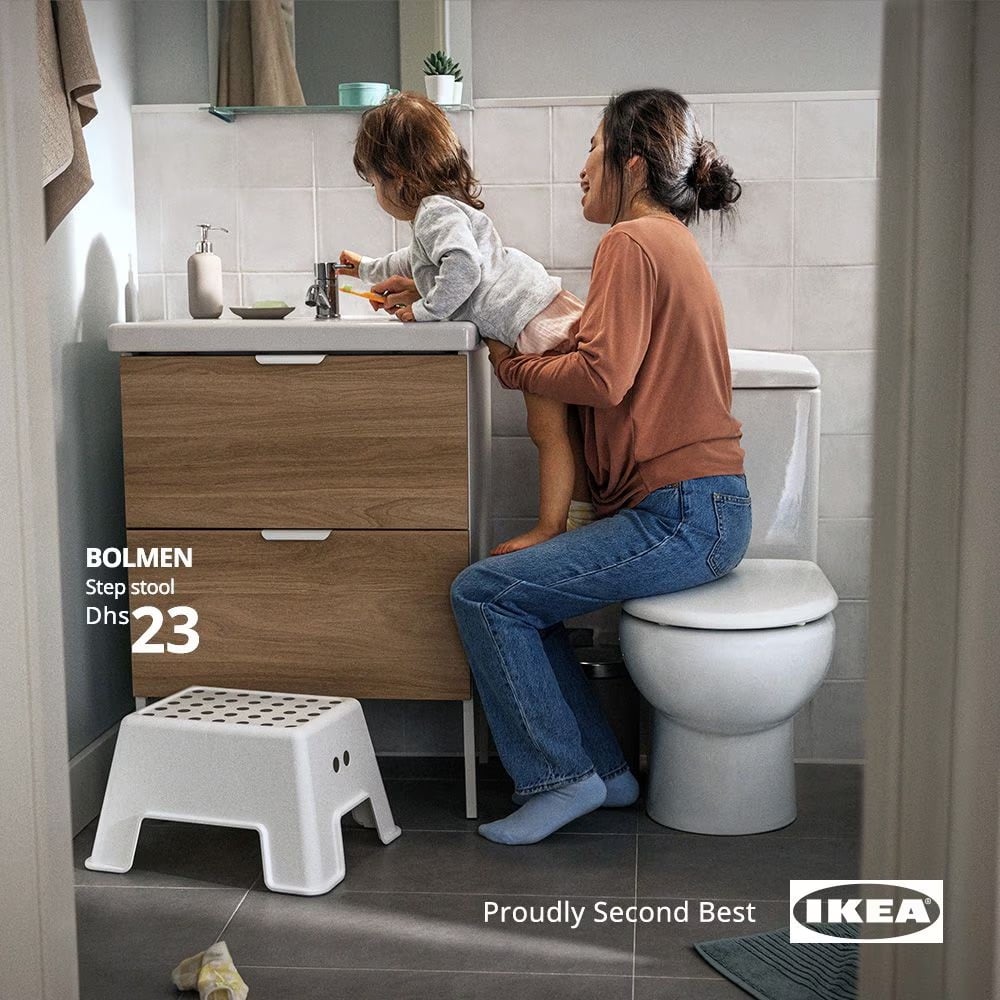
A clever ad campaign by an Ikea franchisee highlights how their products for kids can’t quite replace the support and comfort offered by their caregivers. (via @gray)
This site is made possible by member support. ❤️
Big thanks to Arcustech for hosting the site and offering amazing tech support.
When you buy through links on kottke.org, I may earn an affiliate commission. Thanks for supporting the site!
kottke.org. home of fine hypertext products since 1998.



A clever ad campaign by an Ikea franchisee highlights how their products for kids can’t quite replace the support and comfort offered by their caregivers. (via @gray)
This is a fun ad for the 2024 AICP Awards about the pitfalls of focus-grouping & corporatizing art, featuring an annoyed van Gogh (“How can a painting fail?”) and an even more annoyed Frida Kahlo. (via noah kalina)
When the Star Wars films aired in Chile, instead of cutting away from the movie for commercial breaks, the TV station “seamlessly” inserted ads for Cerveza Cristal beer. We’re talking Obi-Wan opening a chest to find a lightsaber for Luke and instead it reveals a ice-chest full of beer. Or the Emperor Force-reaching for a lightsaber and a can of beer flies into his hand. And of course the whole thing has turned into a meme.
I don’t know exactly what this is, but it appears to be an ad for Lay’s potato chips made by Jimmy Kimmel Live? But whatever, it’s great: a Groundhog Day-inspired clip starring Ned Ryerson (Stephen Tobolowsky) himself that’s perfect for hawking a bajillion different flavors of potato chips. (via @ironicsans)
If the vibe of this commercial for the Coca-Cola Company seems familiar, perhaps it’s because Christopher Storer directed it — Storer is the creator of The Bear and wrote & directed Fishes, the intense season two Christmas episode. No homemade Sprite in this video though…they got to use the real stuff! (via matt)
Megan Gray on a disturbing piece of information that was revealed in the antitrust case against Google: their search engine replaces some search queries with others that generate more commercial results (and therefore more money for the company). Here’s how it works:
Google likely alters queries billions of times a day in trillions of different variations. Here’s how it works. Say you search for “children’s clothing.” Google converts it, without your knowledge, to a search for “NIKOLAI-brand kidswear,” making a behind-the-scenes substitution of your actual query with a different query that just happens to generate more money for the company, and will generate results you weren’t searching for at all. It’s not possible for you to opt out of the substitution. If you don’t get the results you want, and you try to refine your query, you are wasting your time. This is a twisted shopping mall you can’t escape.
Yuuuck. I think it might be time to switch away from Google search — its results have been getting worse for years and it seems like the company doesn’t care too much about fixing it. I’ve been hearing good things about Kagi and there’s always DuckDuckGo.
Update: Several people wrote in noting that Gray’s article was an opinion piece, not reported, and that there was no corroboration of her claim of Google’s query switcheroo. For their part, Google denies the claim: Per Platformer:
Google does not delete queries and replace them with ones that monetize better as the opinion piece suggests, and the organic results you see in Search are not affected by our ads systems.
(thx, andy)
Update: Wired has removed the story from their website:
After careful review of the op-ed, “How Google Alters Search Queries to Get at Your Wallet,” and relevant material provided to us following its publication, WIRED editorial leadership has determined that the story does not meet our editorial standards. It has been removed.
The Internet Archive has a copy of the original piece. Charlie Warzel has more in a report from the Atlantic. (thx, andy)
A McDonald’s restaurant apparently appears in season two of Loki on Disney+ and to mark the occasion, the fast food giant made a commercial featuring a number of other appearances by the brand in movies and TV, including The Office, The Fifth Element, Coming to America (“They’re McDonald’s. I’m McDowell’s.”), and Seinfeld. (Perhaps the most famous McDonald’s reference in cinema history, Jules’ Royale with Cheese bit in Pulp Fiction, is conspicuously missing.)
The ad was created to introduce their As Featured In Meal promotion, which seems to consist of 1100-calorie meals from their usual menu paired with a packet of Sweet ‘N Sour Sauce with the Loki logo on it. I thought the commercial was fun and clever but that promotion is a bit Sad Meal.
These railway safety posters from Thailand are kind of amazing — very straightforward, graphic, and often gruesome in their illustration of the dangers involved with improper train travel.
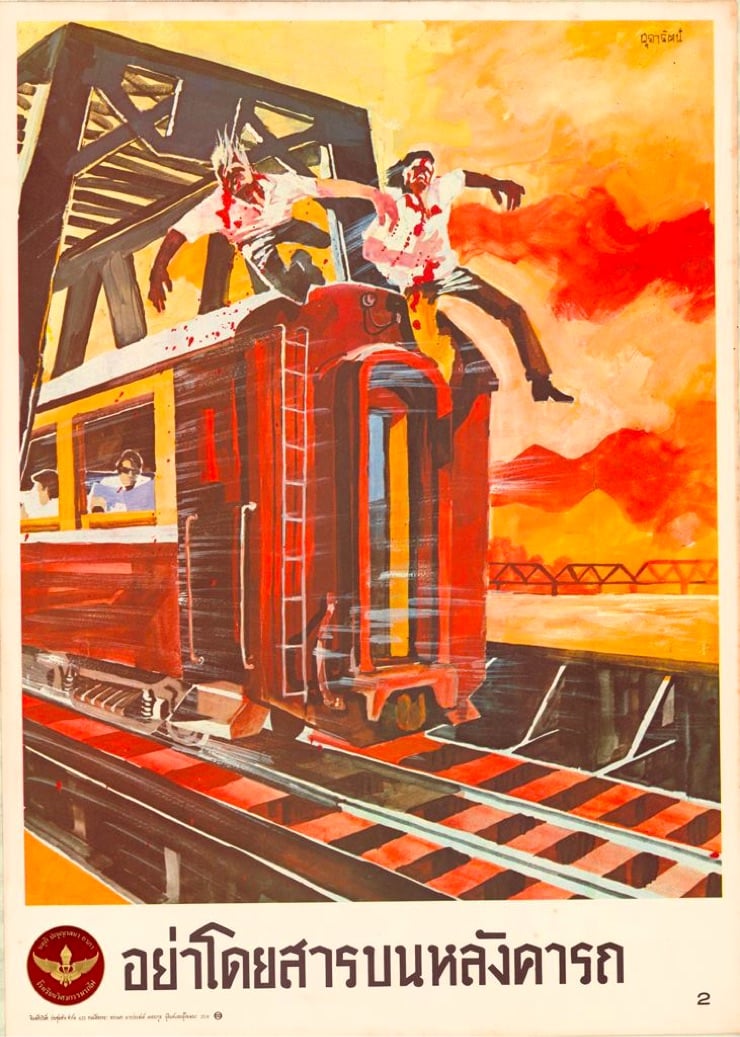
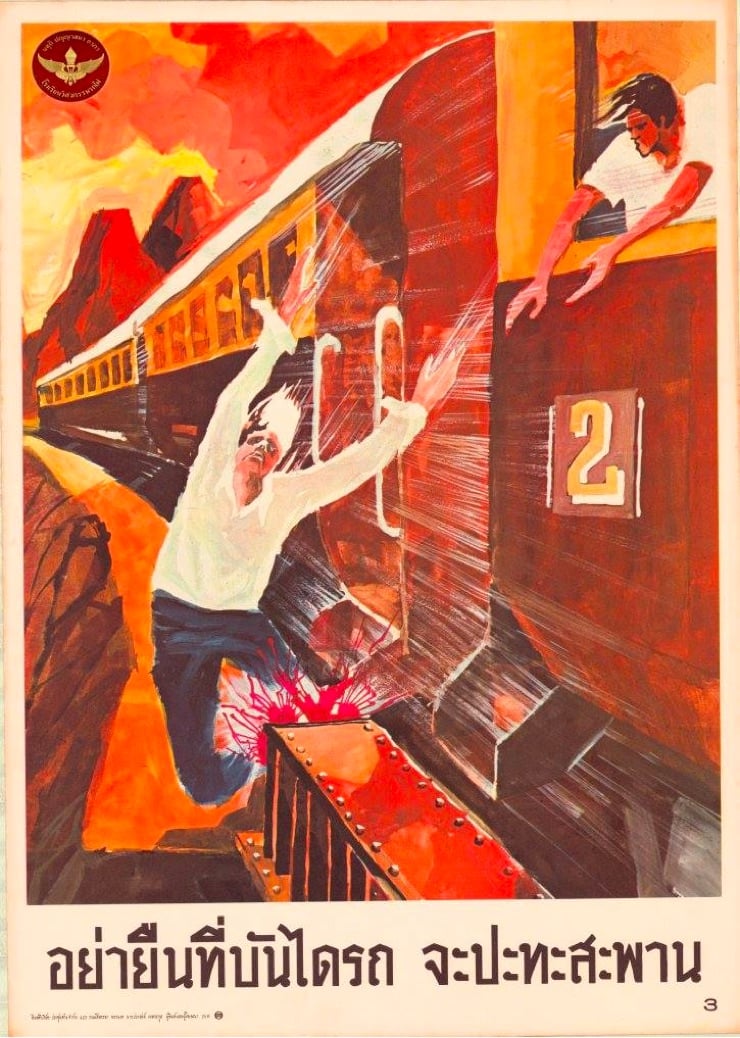
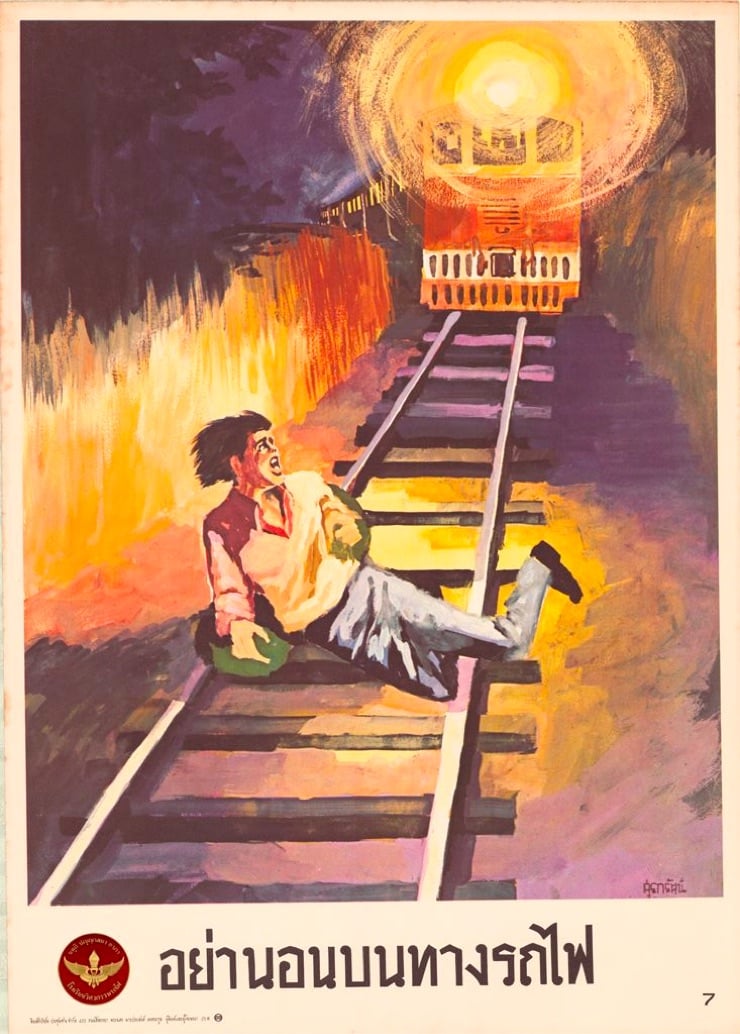
See also The Horror of Vintage Dutch Safety Posters. (thx, chelsea)
This advertisement from Orange, the French telecom company, about the French national football team is one of the best commercials I’ve seen recently. I don’t want to tell you too much about it because the impact of it comes from watching it, so just watch it and you’ll see. And afterwards, you can read more about the ad here.
This is sobering: in an ad for the United Nations Global Compact, the words of Carl Sagan from nearly 40 years ago warn us of the necessity for urgent action on climate change, deforestation, and extinction.
Life is something rare and precious. There is something extraordinary about the planet that we are privileged to live on. The human species is destroying forests and we’re doing it at a rate of one acre of forest every second. We’re doing something immensely stupid.
(via colossal)
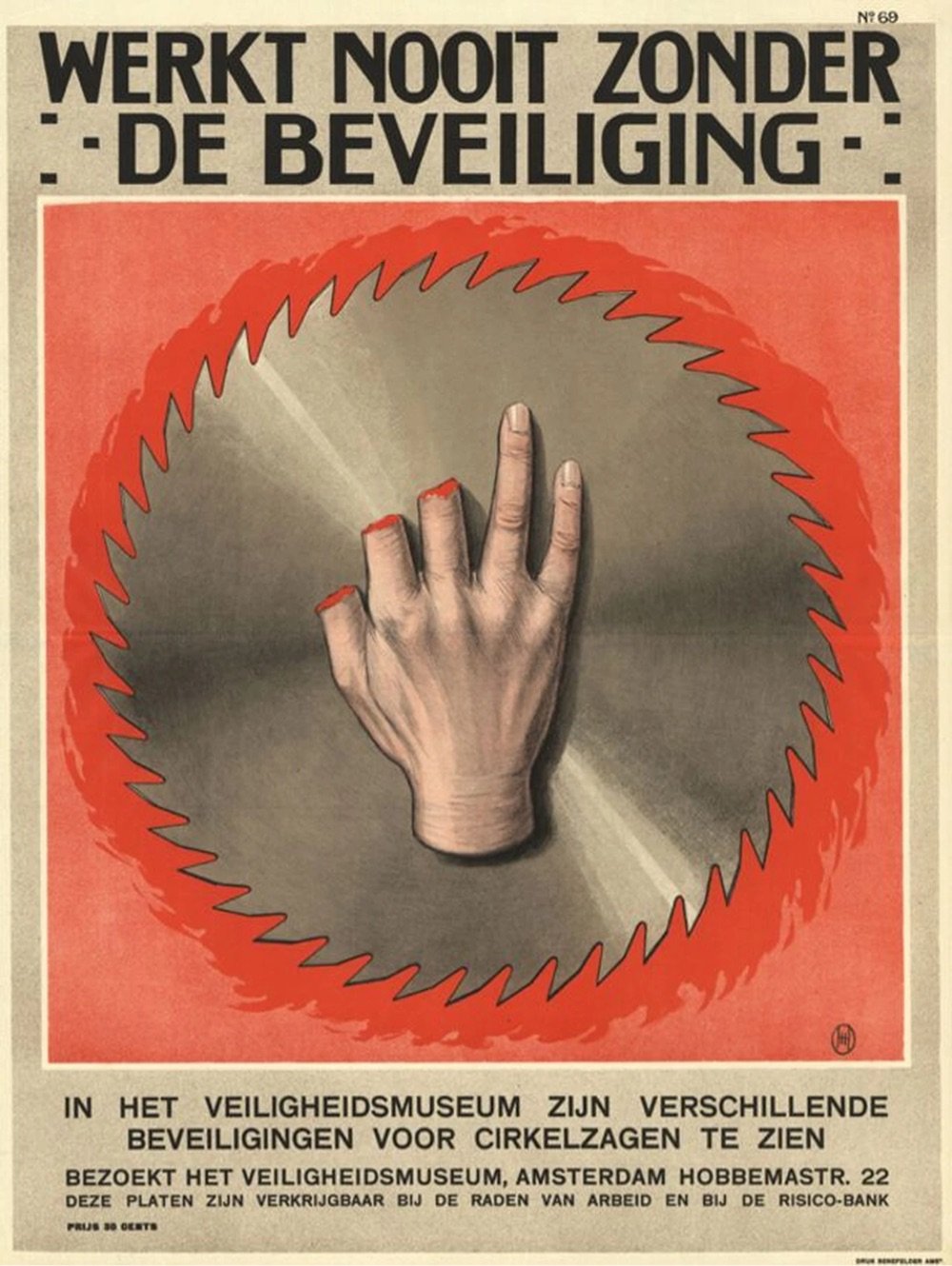
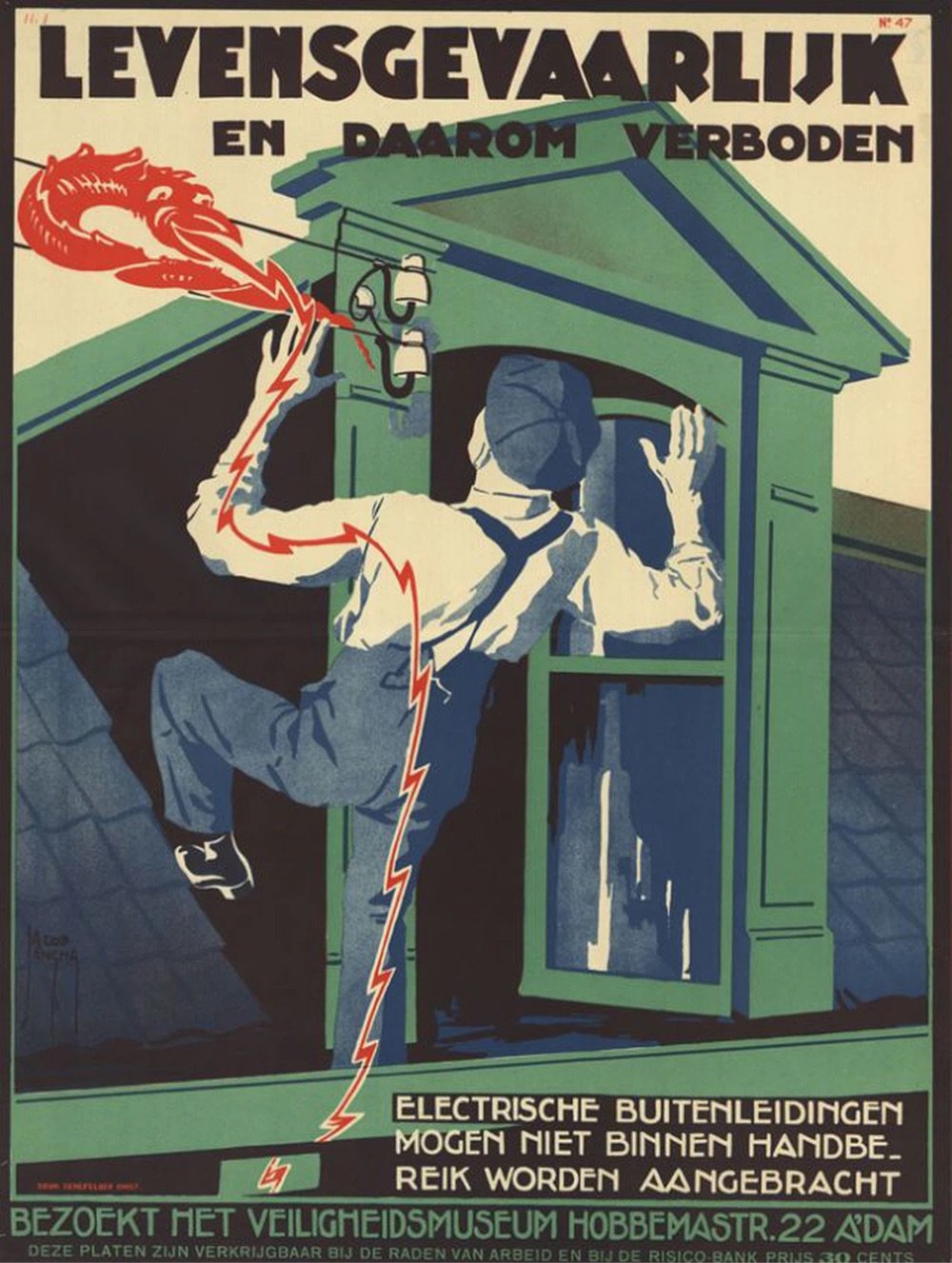
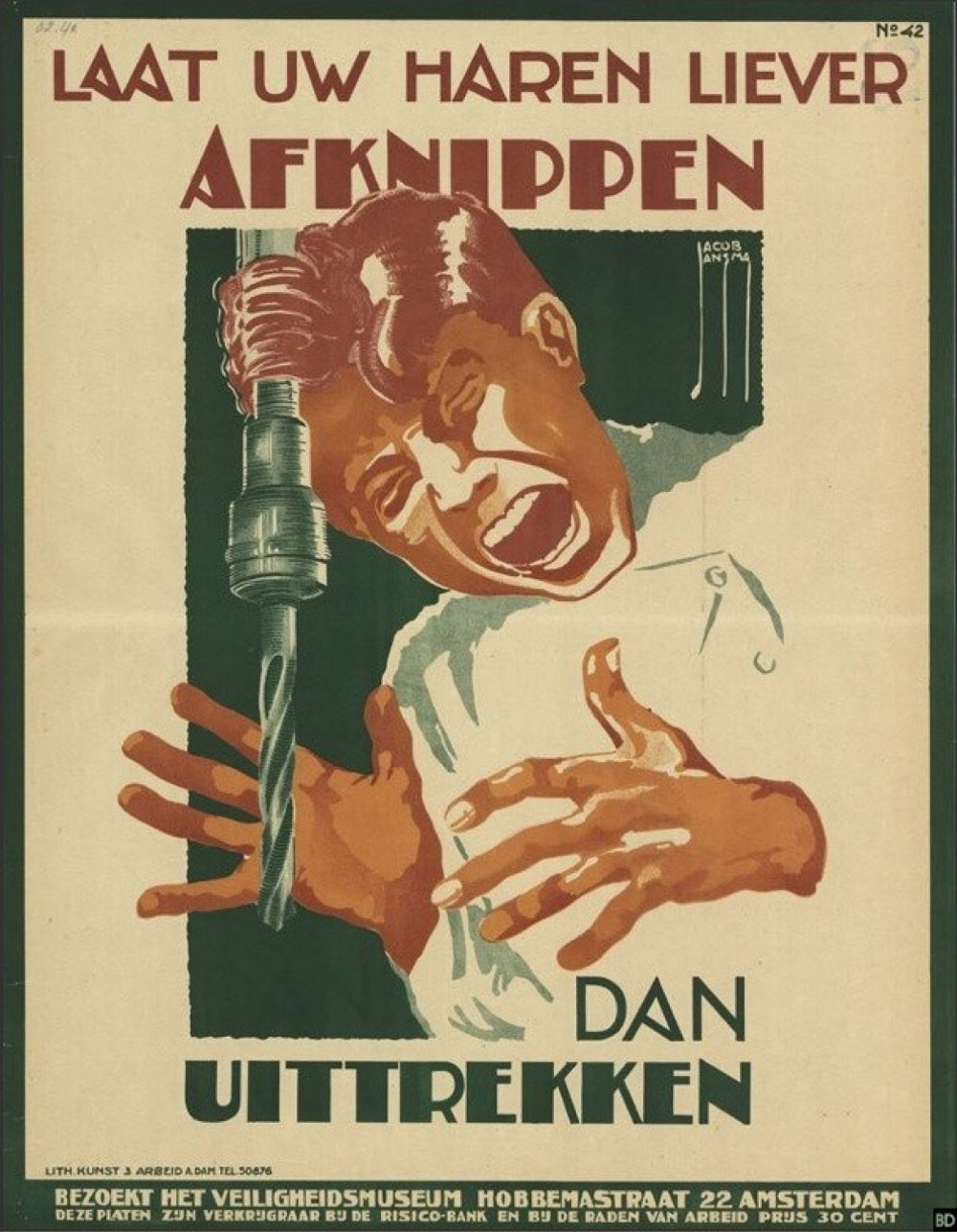
When it came to making safety posters, the Dutch were pretty hardcore — a lot of these vintage posters look more like horror film adverts than safety warnings. (via meanwhile)
These two ads for the NY Times are really effective at communicating the breadth of the paper’s offerings and also how everything, from sneakers to climate change to gravity, is connected to everything else.
I ran across this video this morning on Instagram and I haven’t stopped laughing about it, so I thought I’d share it with you. It’s an improv by Ross Bryant from a show called Game Changer in which he makes up a commercial for a new McDonald’s product: the Macbeth sandwich.
It’s perhaps a liiiittle bit of a softball prompt for Bryant, who is a member of The Improvised Shakespeare Company, but to pull it off, he needs to be fluent in both fast food advertising and Shakespeare. The accent, timing, and delivery are perfect — somehow in the space of a minute, he does two or three highbrow/lowbrow shifts and oh, just watch the damn thing. (via rachel lopez)
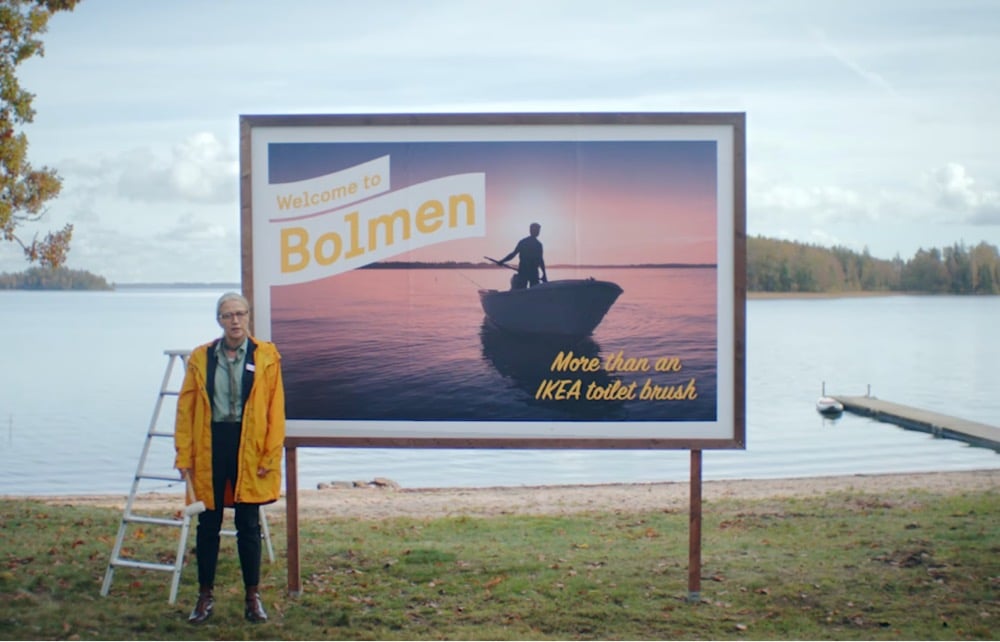
Ikea names their products after locations all over Scandinavia and a bunch of those places in Sweden are fighting back against the practice with a clever “discover the originals” ad campaign.
From Strange Maps:
Bolmen. Now there’s a word you don’t use every day. Where have you encountered it before? In IKEA, where it’s the name of a cheap toilet brush — for a dollar, it’s yours. What you probably don’t know is that the brush was named after a pristine lake in southern Sweden. And now that you do know, that lake doesn’t sound so pristine anymore.
Call it the Curse of IKEA. A curse repeated hundreds of times across the map of Sweden. Beautiful places with exotic names, their appeal diminished by association with mundane items from the world’s most popular furniture catalog. Where does that leave the tourist industry around Lake Toiletbrush? Down in the dumps, is where.
Bodviken is “more than an IKEA countertop sink”; it’s a UNESCO World Heritage site. Voxnan is “more than an IKEA shower shelf”; it’s home to a marvelous river for fishing, paddling, and hiking. Björksta is “more than an IKEA picture with frame”; it’s an historic Viking site. You can check out more of the originals here.
This advertisement from Vermont granite company Rock of Ages, featuring views of their majestic quarry accompanied by soaring opera, is way better than any commercial for a local quarry has any right to be.
See also The Quarryman’s Symphony, an all-time favorite post of mine about the hand signals used by a quarry boss guiding his marble harvesting crews. (via @AndrewLiptak)
I cannot improve upon the succinct description of this video from Natalie Smillie: “A new Ghibli film?! No — this is an advert for the state of Oregon.” It’s a great ad and certainly takes both content and stylistic cues from Studio Ghibli’s films. The video, along with a previous one, was created for Travel Oregon by creative agency Psyop and animation studio Sun Creature.
This public service announcement from the Ohio Department of Health contains an outstanding simple visualization of how social distancing can help prevent the spread of Covid-19 using ping pong balls and mouse traps.
This ad shows that Ohio’s relatively early response to the pandemic was not a fluke and that the state is still taking it seriously.
For her video “The Real Thing”, filmmaker Julianna Villarosa used footage of Coca-Cola’s famous “I’d Like to Buy the World a Coke” commercial ruined by pouring Coke on VHS and film copies to draw attention to the company’s water privatization practices in Chiapas, Mexico, where there’s a water shortage on. From the video:
The Chiapas Highlands, one of Mexico’s wettest regions, has a water shortage. Many drink Coca-Cola, which is bottled nearby and often easier to find than clean water. On average, residents drink more than half a gallon of soda per day. Indigenous Tzotzil use Coca-Cola in religious ceremonies and medicinal treatments. Diabetes has become the second-leading cause of death in Chiapas. The local Coca-Cola plant extracts more than 300,000 gallons of water per day.
Simple, direct, and brilliant activist art — Villarosa uses the company’s literally corrosive product to physically destroy their feel-good advertising to draw attention to the real harm this US company is doing to people & ecosystems around the world. Here’s more on the Chiapas region and the residents’ reliance on Coke:
Coca-Cola’s penetration of the market in Los Altos has also been aided by a strategy of charging less in remote rural areas where a Coke in a returnable glass bottle is often scarcely more expensive than bottled water. As in most of Mexico, clean drinking water is not generally available even to those who can count on running water in their homes, which means many turn to soft drinks for basic hydration.
The irony of this is clear in an area known for its constant downpours and abundant springs, such as the one that attracted the Coca-Cola bottling company. Local activists say the company has so overexploited the spring that the city of San Cristóbal is now facing water shortages.
The activists allege this has been possible in part because Coca-Cola has friends in high political places. Between 2000 and 2006 the country’s president was Vicente Fox, a former head of Coca-Cola Mexico.
It all adds up to a perfect storm of sugar-related health issues in Los Altos. María del Socorro Sánchez, who is in charge of nutrition at the main hospital in San Juan Chamula, says only about one in 10 of the indigenous patients with diabetes accept there is any need to cut out sugar-packed drinks. “They just don’t believe that it is bad for them,” she said.
(via the morning news)
There’s nothing more entertaining than watching Boston-area natives do over-the-top Bawston accents, but it’s always a precarious undertaking. If you don’t get the accent right…yeesh. When Hyundai named their new automated parking feature “Smart Park”, those two words demanded that they give the Boston angle a shot, and the team of Chris Evans, John Krasinski, and Rachel Dratch delivered. The bit that really set the hook for me was when Krasinski called Evans “kid”.
This Saturday Night Live mock TV commercial for a Macy’s holiday sale cuts right to the truth about buying clothes for kids that aren’t right for them or their parents.
Some of their deals include “40% off cozy corduroys that’ll pinch his little nuts”, “kids jackets that are so big & thick they won’t fit in their carseat anymore”, and “everyday savings on mittens they’ll lose, shirts with the wrong Frozen princess, sweaters that make them hot”.
Snowbrawl is a fun short film of a children’s snowball fight shot as if it were a John Wick or Mission Impossible action sequence. David Leitch, the uncredited co-director of John Wick and director of Deadpool 2, shot the whole thing for Apple on an iPhone 11 Pro.
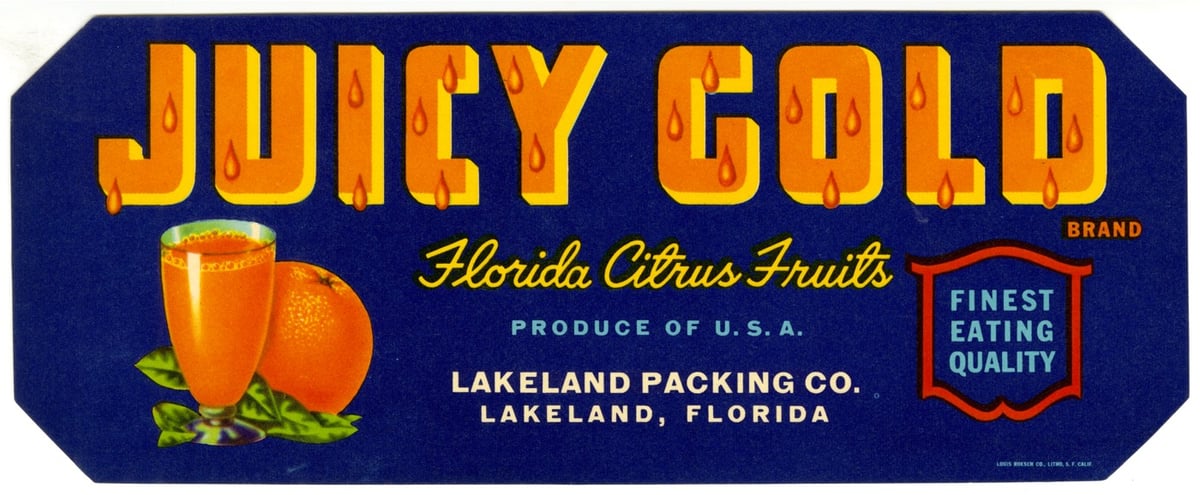
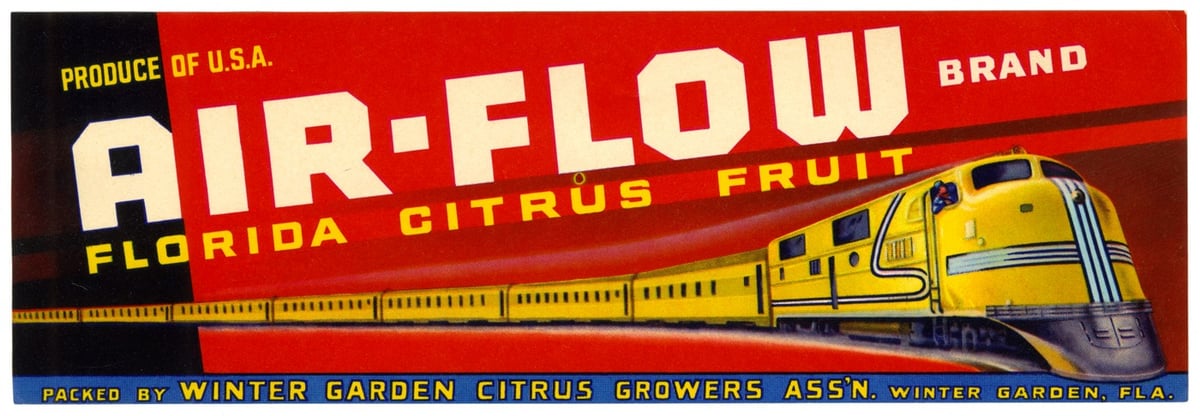
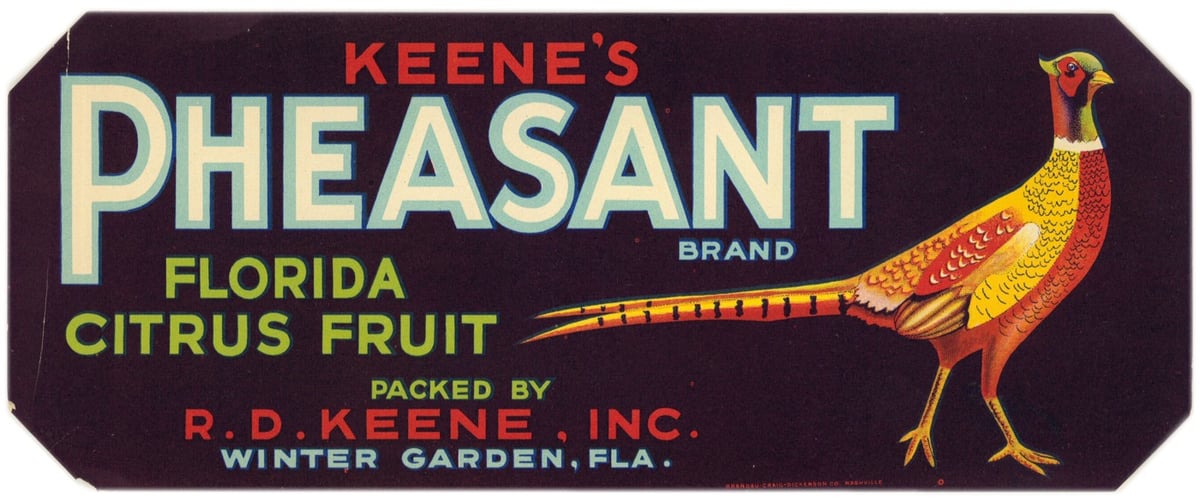
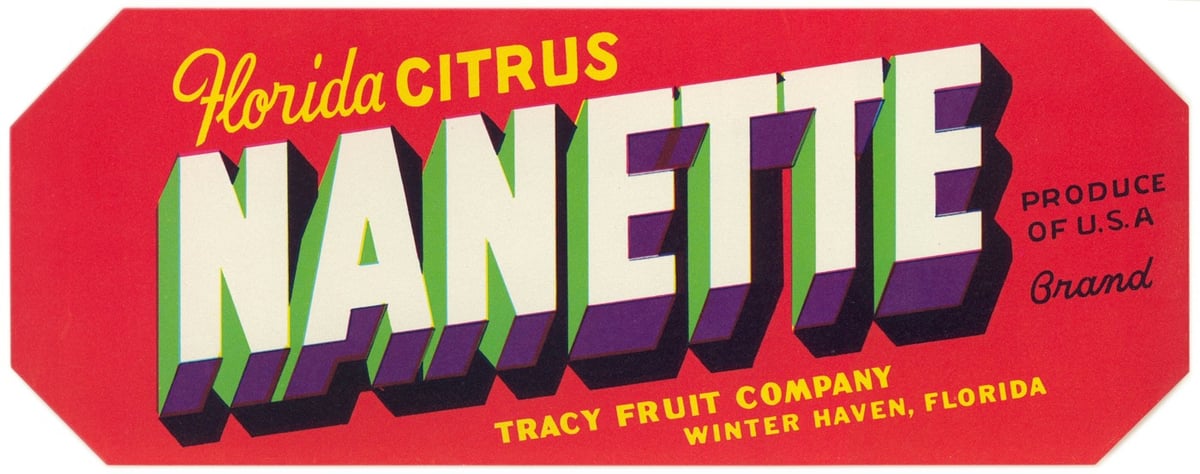
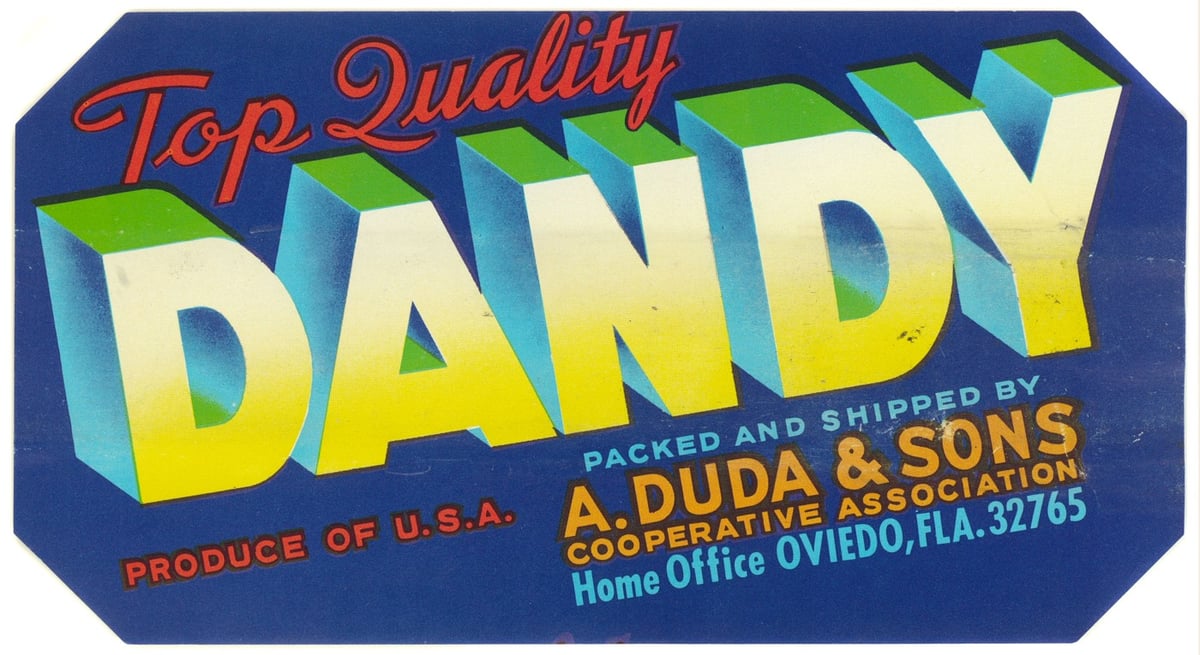
From the State Library of Florida comes a collection of more than 600 crate labels used by the citrus and vegetable industries from the 1920s to the 1950s.
To help give Florida fruits and vegetables an edge, growers looked to the booming produce packing industry in California, where advertisers were already using bold, elaborate labels to catch buyers’ attention. Florida companies began designing their wooden shipping crates and paper labels based on this successful model.
Paper crate labels were used in Florida from the late 1800s until the 1950s. The earliest paper labels were fairly generic and often didn’t include a brand name. Starting in the 1920s, advertisers began developing more complex marketing strategies, aiming to entice buyers with colorful brand names and imagery.
What an amazing variety of design and typographic styles. There’s also some questionable imagery in there as well: Mammy Brand, Dixieland Brand, Brave Vegetables, Indian Chief, etc.
See also The US Government’s Trove of Beautiful Apple Paintings. (via @john_overholt)
Last week we saw two absolutely incredible product introductions, and I’m having trouble picking a favorite. First, there were Glenlivet’s cocktail capsules that immediately reminded the entire internet of Tide Pods.
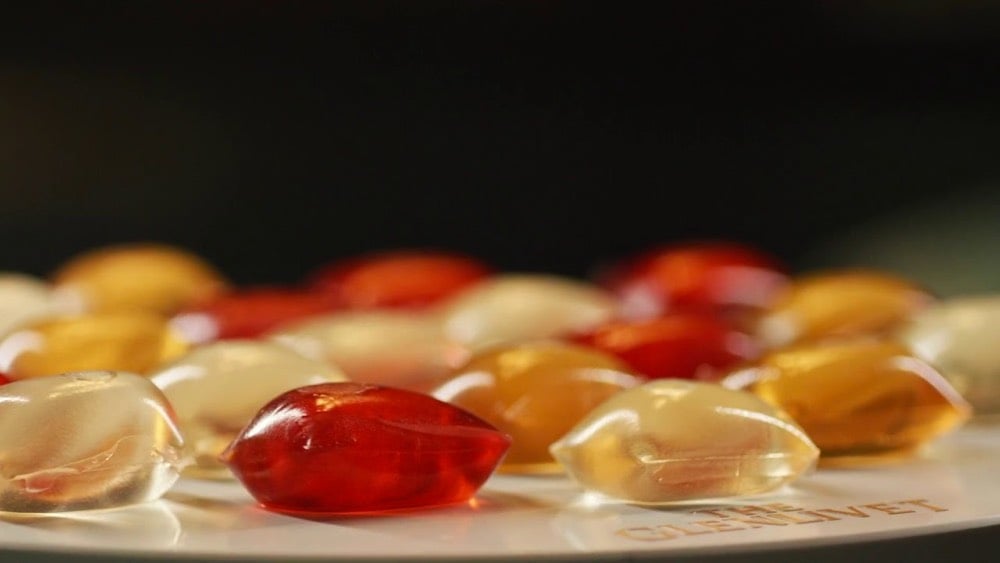
And then there was Le Creuset’s Star Wars collection of cookware, including a Darth Vader dutch oven, R2-D2 cooker, a Han Solo in carbonite roasting pan, and a “hand-painted, special-edition Tatooine™ Round Dutch Oven, inspired by the desert planet with captivating binary sunsets”.
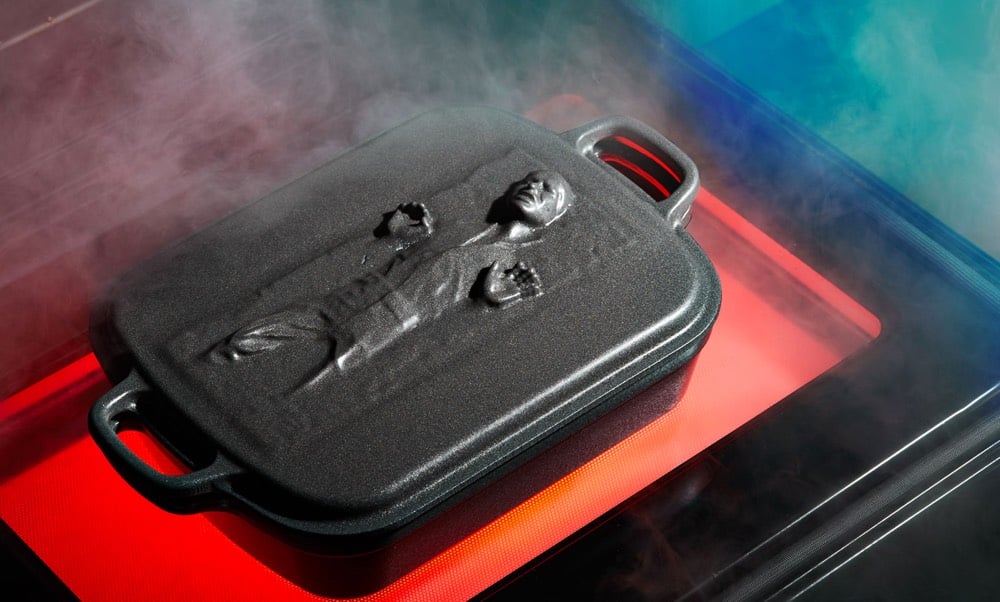
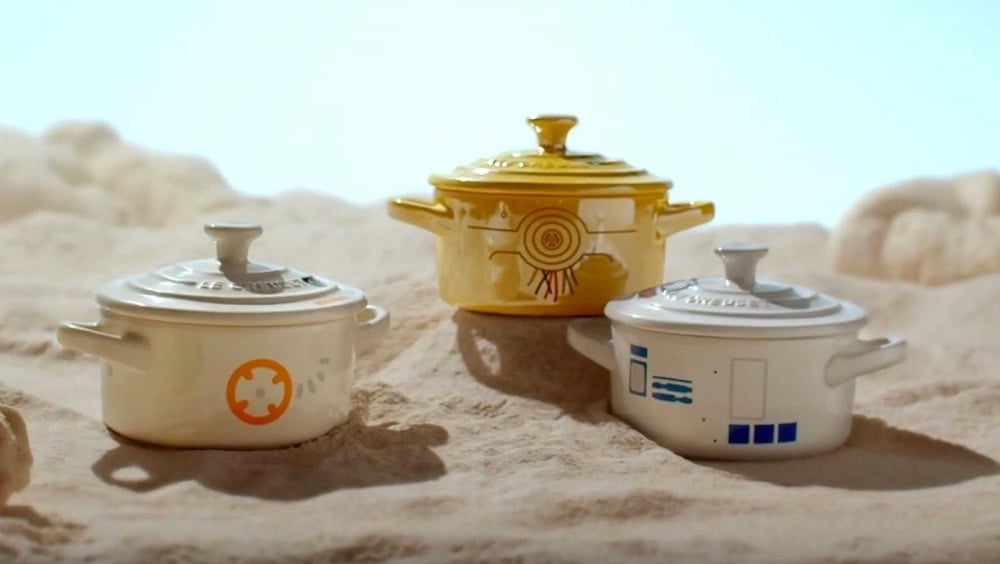
People, we are living in a true golden age.
In 2008, Japanese creative agency Hakuhodo created a campaign for the World Wildlife Federation that featured photos of endangered animals where the number of pixels in the photo matched the remaining population of the animal pictured.
![]()
![]()
Imgur user JJSmooth44 recently updated the campaign to include many more animals, including the unrecognizable Javan rhino.
![]()
(via @UnlikelyWorlds)
In partnership with the Institute for the Future, Errol Morris has produced a series of 30-second spots about climate change that star Bob Odenkirk as Admiral Horatio Horntower.
Here’s what Morris had to say about the ads:
I have never had any trouble believing in climate change, global warming, or whatever you want to call it. The scientific evidence is overwhelming. Galileo famously replied to Archbishop Piccolomini (or some other Vatican prelate), “And yet it moves.” Today we could just as well say, “And yet it changes.” But what to do about it? Logic rarely convinces anybody of anything. Climate change has become yet another vehicle for political polarization. If Al Gore said the Earth was round there would be political opposition insisting that the Earth was flat. It’s all so preposterous, so contemptible.
I’ve created nineteen thirty-second spots that profile a character I created: Admiral Horatio Horntower. He’s an admiral of a fleet of one and perhaps the last man on Earth. Hopefully it captures the absurdity and the desperation of our current situation. No pie graphs, no PowerPoint — just a blithering idiot played by one of my favorite actors, Bob Odenkirk.
In 2013, University of Virginia historian Grace Elizabeth Hale wrote about “the long and often fractious history of soft drinks, prohibition laws and race” for the NY Times.
Coke’s recipe wasn’t the only thing influenced by white supremacy: through the 1920s and ’30s, it studiously ignored the African-American market. Promotional material appeared in segregated locations that served both races, but rarely in those that catered to African-Americans alone.
Meanwhile Pepsi, the country’s second largest soft drink company, had tried to fight Coke by selling its sweeter product in a larger bottle for the same price. Still behind in 1940, Pepsi’s liberal chief executive, Walter S. Mack, tried a new approach: he hired a team of 12 African-American men to create a “negro markets” department.
Elsewhere in the soft drink industry, though, the oversimplification of target consumers has had its questionable if not altogether offensive moments, too. Mountain Dew, for instance, originally based its entire brand around making fun of poor Appalachians, also known as hillbillies. In the late 40s and early 50s, its label featured the official Mountain Dew mascot “Willy the Hillbilly” and the slogan: “Ya-Hoo! Mountain Dew. It’ll tickle yore innards.” (The name of the soft drink, of course, refers to the Southern slang for moonshine.)
In a not-very-convincing rebuttal to Hale’s article, Coke’s “Chief Historian” argues that the company has always been America’s “most inclusive drink” and more oddly, that Coke has never contained cocaine, which Snopes handily debunked. (thx, caroline)
Visual engineer Steve Giralt constructs bespoke robotic cameras to capture unusual scenes for TV commercials, many of which feature food. The behind-the-scenes videos of how these rigs are constructed and work are fascinating. These two short videos about Giralt’s work are a good place to start:
There are many more on his website and on Instagram, like the s’mores smush and burger flipping.
This is an ad for Volkswagen’s I.D. Buzz, a concept car that is slated to enter production in 2022 as the long-awaited new version of the VW Microbus:
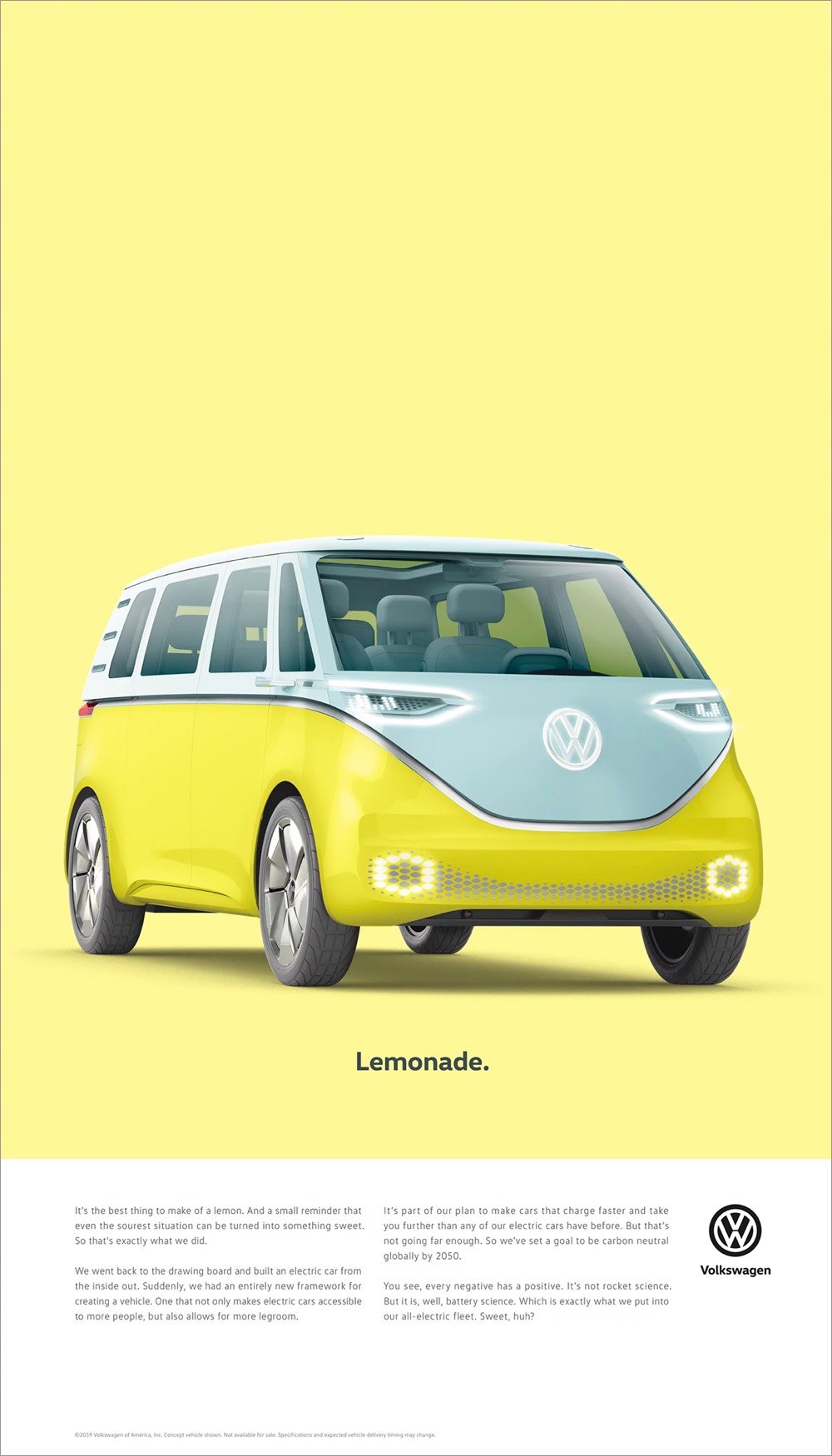
This ad references a couple of different things. First, VW is being very aggressive in pushing their electric vehicles in the wake of their 2015 emissions scandal, in which the company intentionally programmed their diesel cars to run clean in test mode in order to meet US emissions standards. The second reference is to their iconic ad from the 60s:
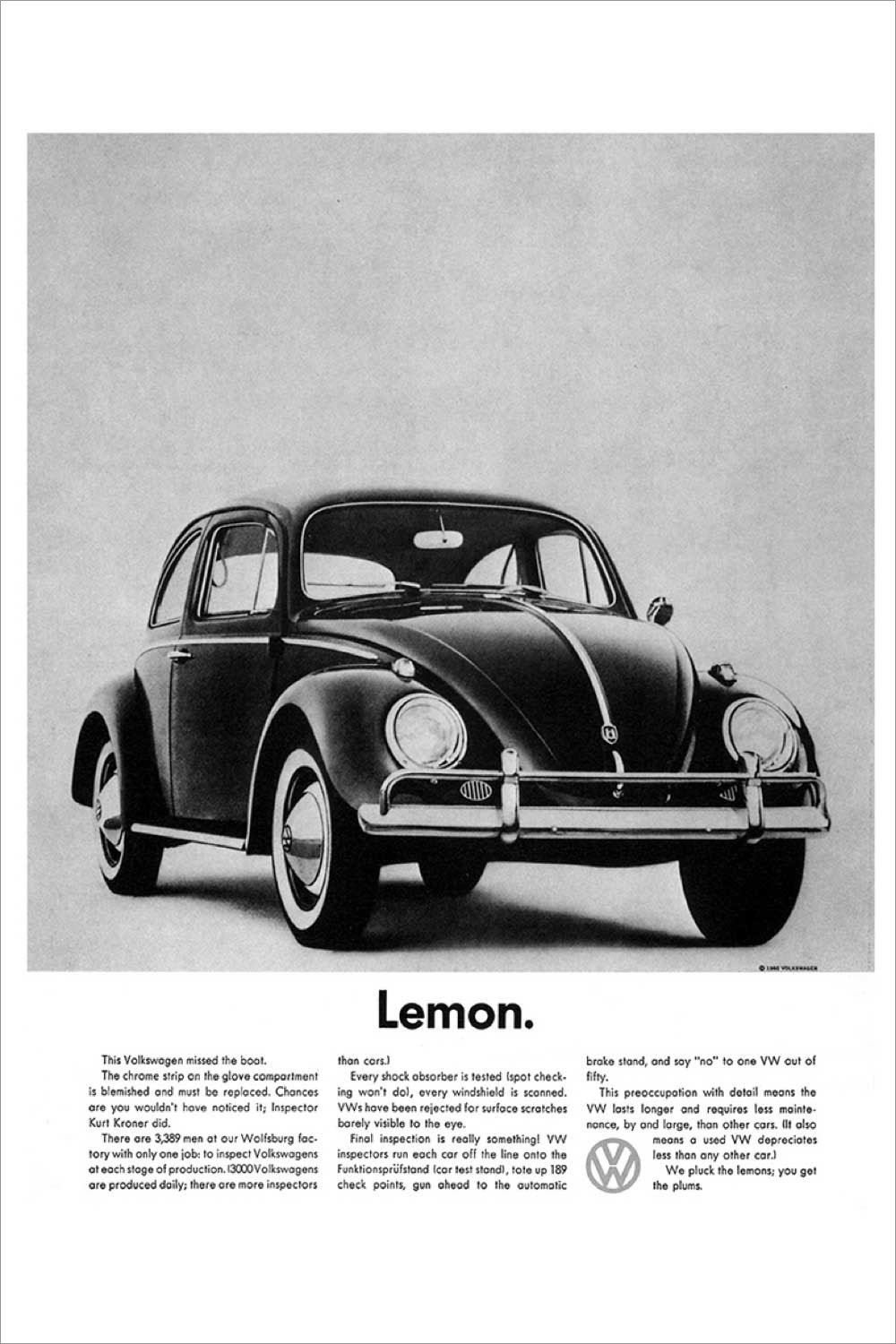
Whether or not the company will be successful in rehabilitating their reputation is one thing, but that ad is super clever.
VW has a history of referencing bad news about their brand in their advertising: How VW Turned Beastie Boys-Inspired Theft of Car Parts into a Clever 80s Ad.
For an ad campaign running in the United Arab Emirates, Ikea recreated the famous TV living rooms from three shows using only Ikea furniture and housewares. See if you can guess which shows these are from…
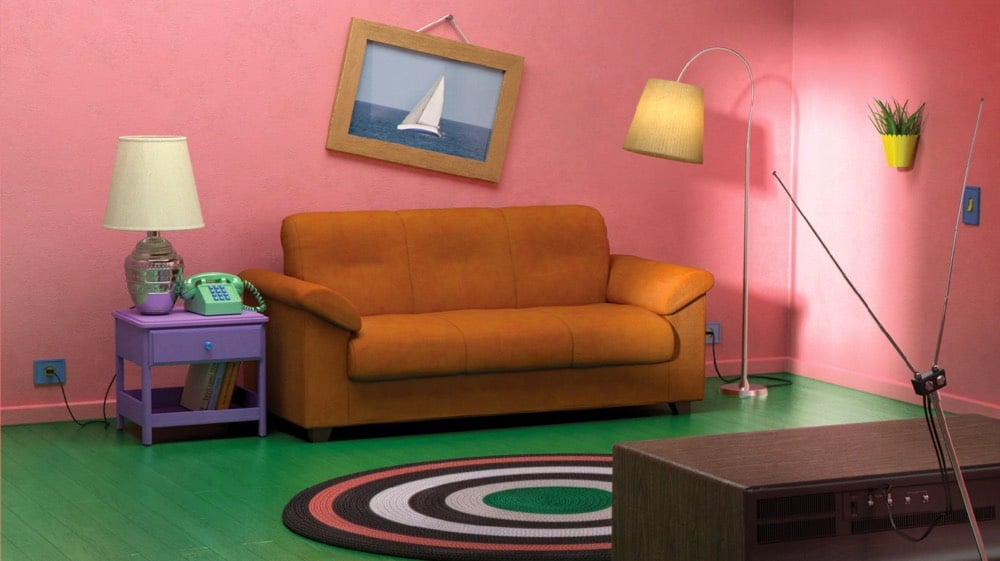
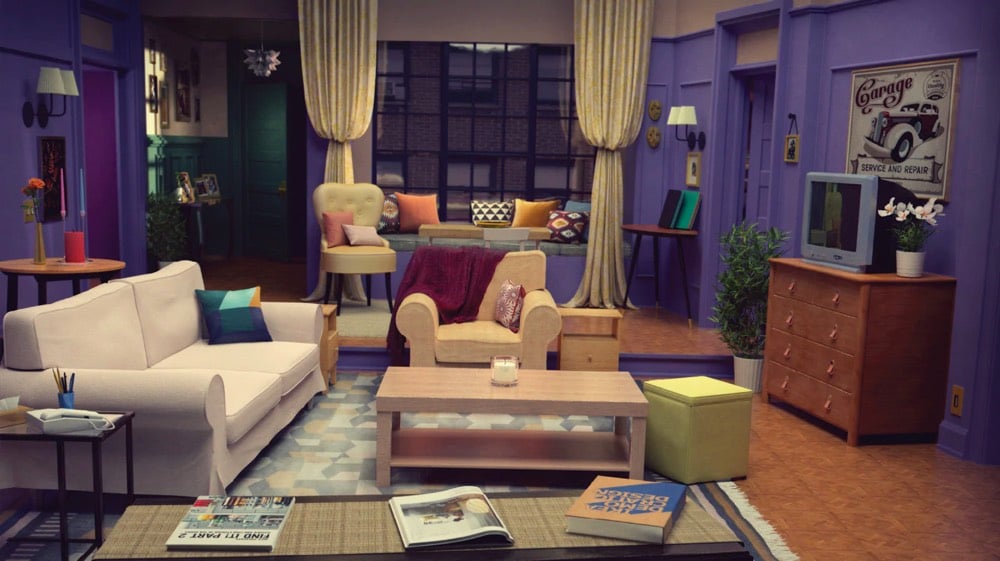
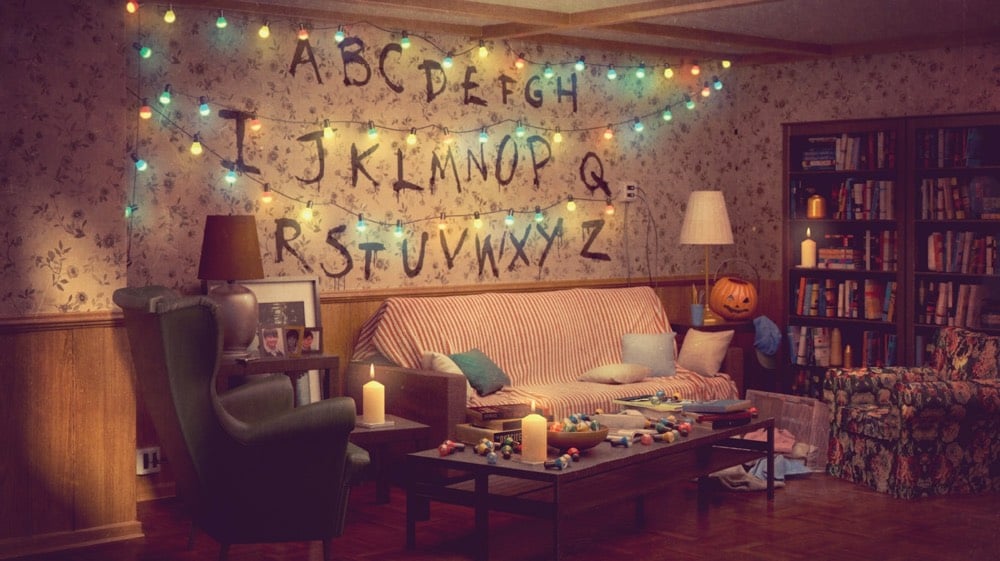
(via @mkobach)
Artist and former advertising art director Alvaro Naddeo does these wonderful paintings of old iconic junk from our branded past repurposed into absurdist structures and vehicles, like Junkyard Wars through the lens of Warhol. It’s tough to explain, so just feast thine eyes on a couple of examples:
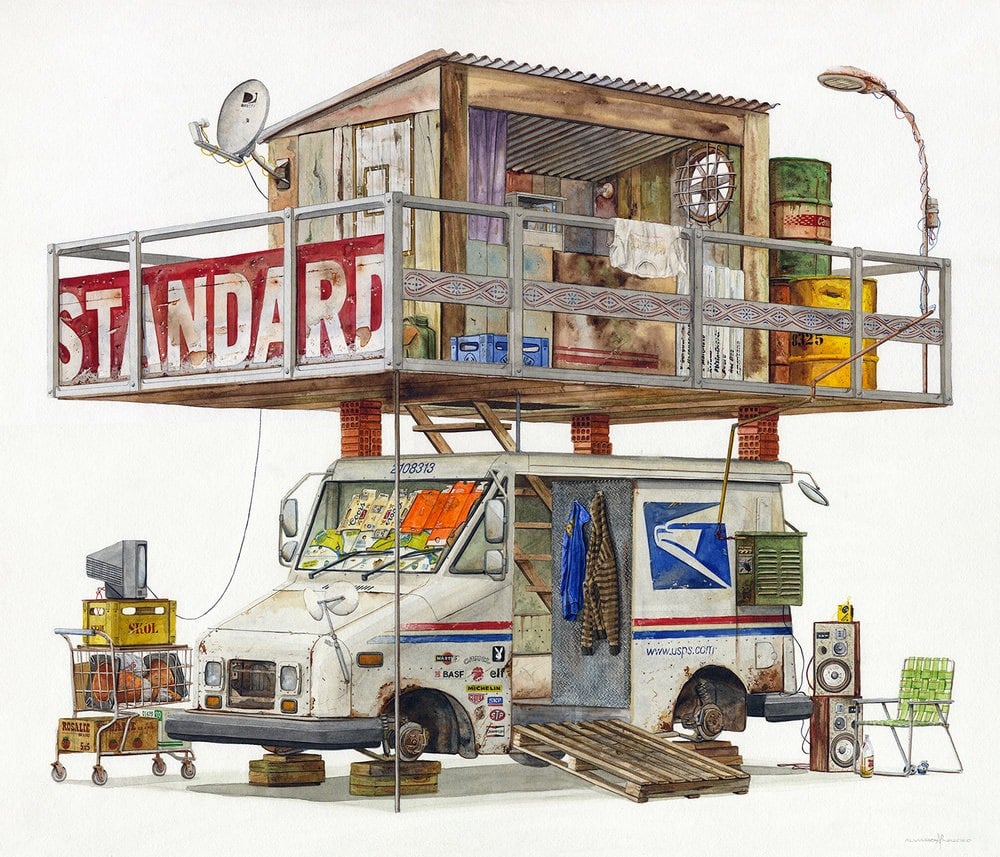
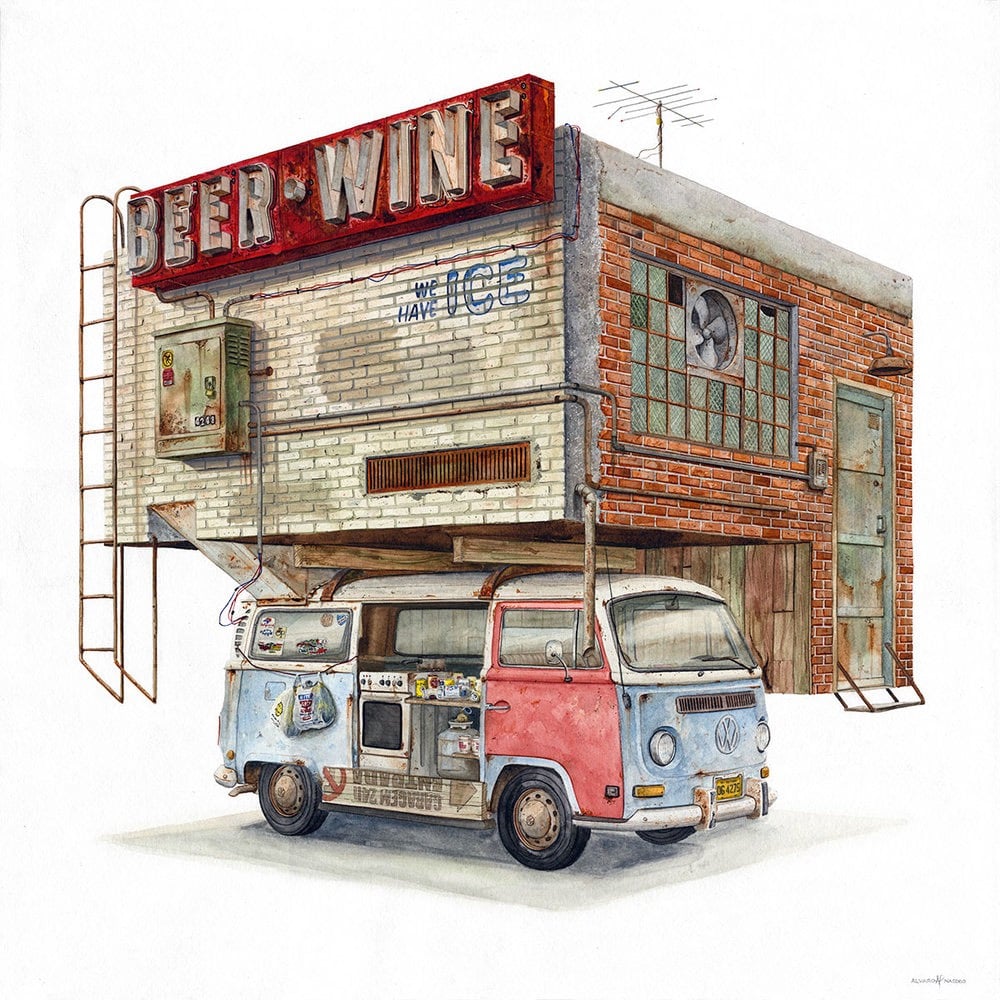
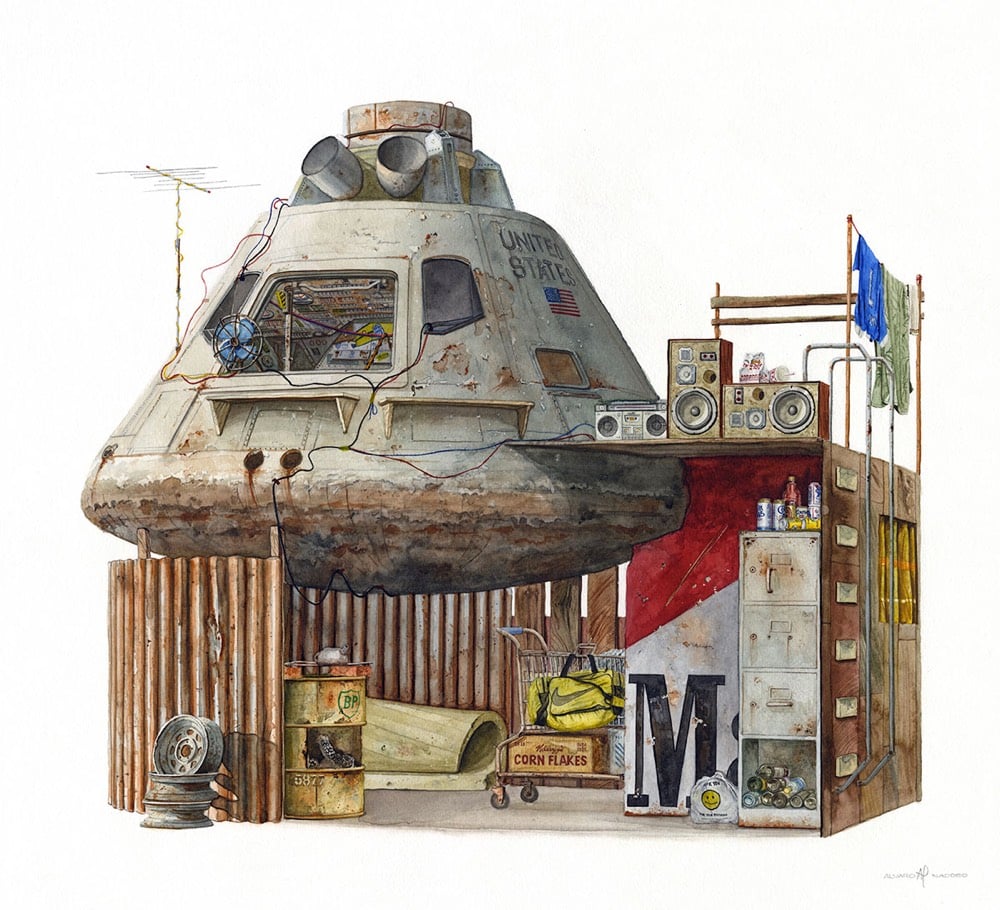
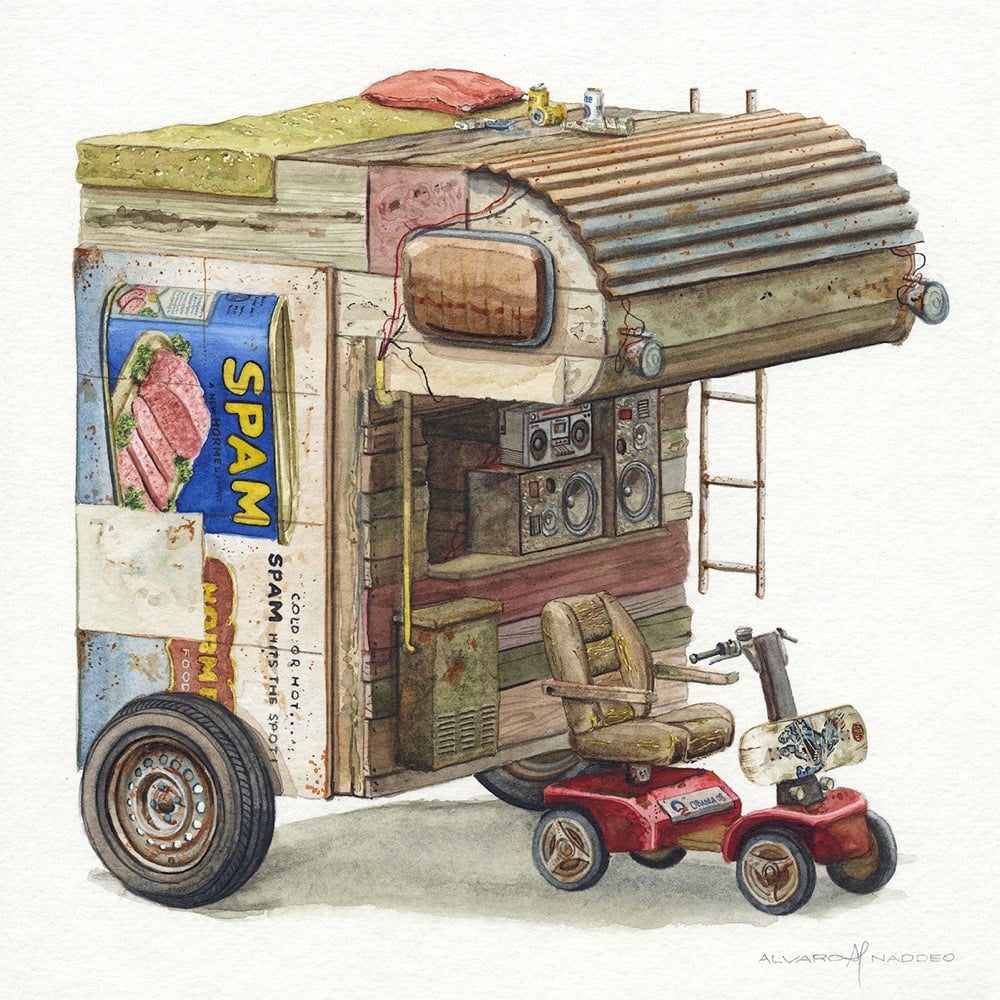
Ok, that was more than a couple. But there are so many more on his website and Instagram (including work-in-progress stuff)…check them out!
Naddeo recently shared his process for making these paintings with Colossal:
Naddeo tells Colossal that he starts with a loose sketch by hand. He then uses 3D software to help define a plausible shape for his imagined constructions, and creates a reference composition in Photoshop. After years of practice, Naddeo shares that he is able to recreate the texture, color, and shadows of various building materials like brick and concrete from memory. He uses reference photos to help flesh out small detail items, which are similarly rendered in watercolor.
A prime example of Robin Sloan’s concept of the flip-flop.
Stay Connected